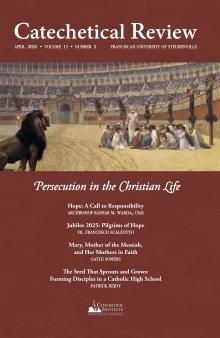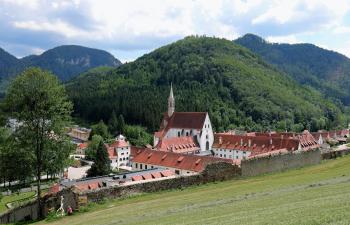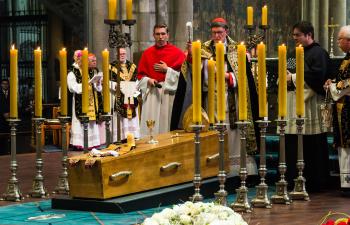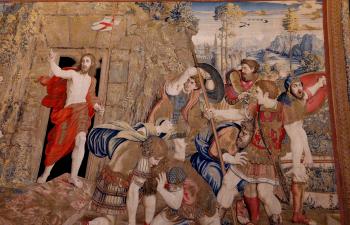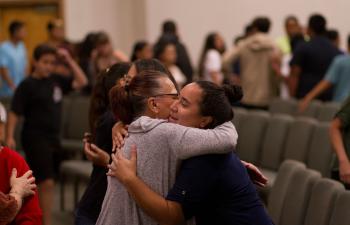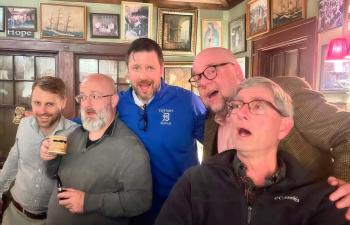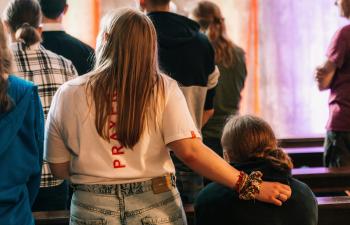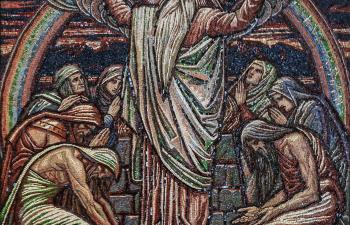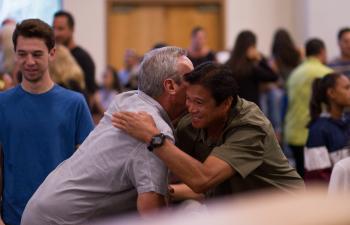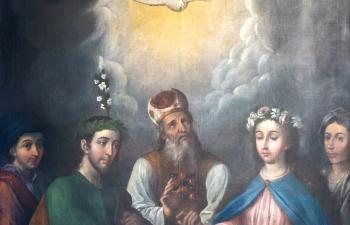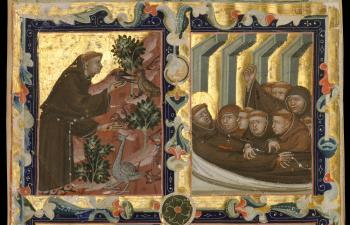 The year 2025 will mark the occasion of an ordinary Jubilee. Pope Francis announced the Jubilee Year on May 9, 2024 with the Apostolic Letter Spes non Confundit (SC), "Hope Does Not Disappoint", and it officially began on December 24, 2024, with the opening of the Holy Door of St. Peter’s Basilica in the Vatican. But, what is the Jubilee? Where does it come from, and why does the Church continue to celebrate it? How will it be celebrated in 2025?
The year 2025 will mark the occasion of an ordinary Jubilee. Pope Francis announced the Jubilee Year on May 9, 2024 with the Apostolic Letter Spes non Confundit (SC), "Hope Does Not Disappoint", and it officially began on December 24, 2024, with the opening of the Holy Door of St. Peter’s Basilica in the Vatican. But, what is the Jubilee? Where does it come from, and why does the Church continue to celebrate it? How will it be celebrated in 2025?
Encountering Hope
“May the Jubilee be a moment of genuine, personal encounter with the Lord Jesus” (SC, 1). This is the hope that moves the pope in declaring the Holy Year of 2025. This is the center of the Holy Year: a genuine encounter. The encounter is with the Crucified and Risen One, the Son of the Father, Jesus of Nazareth. He is the Living One. It is a personal encounter because it is shaped by the reality in which we live—the specific time that the People of the Lord and the human community are living through, their culture, their characteristics, their gifts, their specific dramas, etc.
This encounter is marked by a very particular tone: we are to meet the Lord in the environment of hope. In fact, this encounter is a source of hope. The encounter with the Crucified and Risen Lord guarantees that hope will “not disappoint” (Rom 5:5). In Spanish, this phrase is la esperanza no defrauda—hope does not deceive you, does not fool you, does not mislead you. The Greek verb used by Paul (καταισχύνει) also carries the connotation of shame: hope will not leave you ashamed. It is not something to be embarrassed about. In summary, you can trust it. It is solid ground. But, what kind of certainty is this?
It is not the certainty of someone who already knows everything in advance, consumed by the anxiety of control. It is the agile confidence of one who knows they are supported by what is necessary and sufficient—the announcement of the Gospel—to cross any kind of terrain, even one made of tribulations and sufferings.
Where does such certainty come from? “Hope does not disappoint, because God’s love has been poured into our hearts through the Holy Spirit that has been given to us” (Rom 5:5). The love of God, revealed and manifested in Jesus’ death and Resurrection, is the birthplace of a hope formed according to the Word of the Gospel. The gift of the Crucified Son and his inexhaustible companionship will not fail. They are no longer absent from our history, and the Holy Spirit is a flame that burns and does not extinguish (cf. SC, 3).
In looking forward to our eternal encounter with the Risen Christ, a daily, ordinary mediation of hope emerges. “In our fast-paced world, we are used to wanting everything now. We no longer have time simply to be with others; even families find it hard to get together and enjoy one another’s company. Patience has been put to flight by frenetic haste, and this has proved detrimental, since it leads to impatience, anxiety and even gratuitous violence, resulting in more unhappiness and self-centredness” (SC, 4). Patience is the virtue needed to live in time. It is in the step of the pilgrim, who neither rushes nor remains still but walks steadily, with perseverance and determination. It is a virtue that enters into everyday life (think of families gathered around the table) and is an ordinary way of living the mystery of the death and resurrection of the Lord Jesus.
A passage from the Letter to the Hebrews summarizes this perspective based on our hoped-for destination, which, precisely because it is our ultimate goal, colors our daily journey: “We who have taken refuge . . . hold fast to the hope that lies before us. This we have as an anchor of the soul, sure and firm, which reaches into the interior behind the veil, where Jesus has entered on our behalf as forerunner” (Heb 6:18–20). The image of the anchor, also depicted in the Jubilee logo, is an ancient Christian symbol signifying a hold on faith in Jesus Christ, the source, fulfillment, and object of all hope.
The living and personal encounter with the Lord Jesus has a special path in reconciliation. “There is no better way to know God than to let him reconcile us to himself (cf. 2 Cor 5:20)” (SC, 23). Here emerges the tone that runs through every Jubilee: the theme of the forgiveness that God offers, mercy in its fullest measure.[1]
Historical Considerations
The Jubilee is an event of the people, and it has been an event of faith since the Church’s first Jubilee in 1300. In fact, that first Holy Year was born out of the will of the People of God. In an end-of-the-century, end-of-the-world climate, the people of Rome flocked to Pope Boniface VIII in 1299 to ask for the gift of indulgence. The pope responded to their insistent request by granting “an indulgence of all sins, not only full and more abundant, but most full.” So reads the bull of indiction, Antiquorum Habet Fida Relatio.
It was issued on February 22, 1300, and Boniface VIII wrote that the indulgence was retroactive: It also applied to those who had already made the pilgrimage since the previous Christmas. A curious fact, but one that tells us about the insistence of the People of God on requesting the forgiveness of sins.
This aspect seems to me an important first feature. We in the Dicastery for Evangelization are trying to keep it always in mind in the preparation for the Jubilee Year. The Jubilee must be for the people. It must express the spirituality of the whole Church—the People of God of every age in every continent. In fact, the calendar of events for the Jubilee Year is a clear sign of the involvement of the whole People of God: families, the elderly, the young, the sick, priests and consecrated, the laity, dioceses all over the world, associations, and many more are all invited to participate in a special way in the Jubilee. All will have the chance to live their journey as pilgrims of hope.
Starting from the perspective of forgiveness, the central theme of granting indulgences reappears, which has been a part of every Jubilee since 1300. Indulgences help us discover “the unlimited nature of God’s mercy” (SC, 23). God’s mercy is unlimited and pervasive in the lives of individuals. The biblical Jubilee, described in Leviticus 25, aimed at a comprehensive restoration of fortunes, the liberation of slaves, even the resting of the land. The Lord Jesus takes on the year of grace (cf. Lk 4:17–21) and extends it as a path of reconciliation with the Father, a path that passes through him, who is the “gate for the sheep” (Jn 10:7).
Exploring this traditional practice of granting indulgence, which today is often misunderstood in its distinction between temporal punishment for sin and guilt, reveals a great richness. Indulgence clearly acknowledges that in addition to harming our relationship with God, sin leaves its traces within oneself, in personal relationships, and in the social contexts in which we live. Indulgence seeks to take one’s past and the effects of sin within it seriously and to repair broken bonds and wounded situations. It is a time of “post-operative physiotherapy.” Indulgence recognizes that a path of conversion is necessary for God’s mercy to deeply permeate each person’s life.
The practice of granting indulgences also takes freedom seriously. We are not automatons and an indulgence is not magic. It is necessary for each person to freely cooperate with God upon receiving an indulgence. Freedom has its own rhythms, even in conversion and reconciliation. Furthermore, indulgence proposes steps: it reactivates freedom so that it can practice repairing what has been torn, so that interrupted movements can regain fluidity (cf. SC, 23).
Thus, the Jubilee is not outside of history. On the contrary, it fits in as a special time within a precise age. The theme of hope is not chosen randomly; it seeks to reactivate freedom and communal life precisely under this light of hope, particularly urgent for today.
Pope Leo XIII proclaimed the Jubilee in 1900 with the prospect of overcoming widespread moral degradation; just think of the condition of workers in that time and it is clear why this was the theme. The 1925 Jubilee emphasized the theme of fraternity: the useless slaughter was behind and European totalitarianisms were on the horizon. The Jubilee of 1950 had the tone of reconstruction, faced with a Europe (and a world) full of physical and moral rubble after World War II. In 1975, Paul VI chose the theme of reconciliation and communion in a tense post-conciliar time—but also in a climate of the Cold War. John Paul II proclaimed the year 2000 as the great Jubilee of the Incarnation, a gateway to the third millennium. Today is the time for hope.
A central part of Spes non Confundit lists numerous signs that make hope visible: peace; the transmission of life; care for prisoners, the sick, young people, migrants, exiles, refugees, the elderly, and the poor (cf. SC, 8–15). This passage offers a perspective for reading reality in a way that is truly Christian rather than merely sociological or psychological. This is the deeper core of the Jubilee; it aims at a movement of such vastness that the Spirit inspires the entire Church to sow anew a culture of hope.
[1] Cf. Pope Boniface VIII’s papal bull for the Jubilee of 1300, Antiquorum Habet Fida Relatio.
Art Credit: The Incredulity of Saint Thomas by Caravaggio, Wikimedia Commons.
This article is from The Catechetical Review (Online Edition ISSN 2379-6324) and may be copied for catechetical purposes only. It may not be reprinted in another published work without the permission of The Catechetical Review by contacting [email protected]


